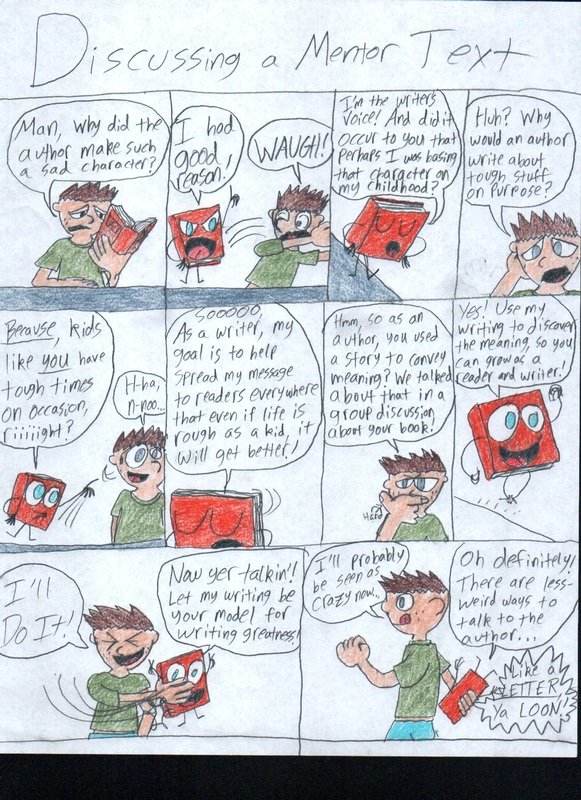This week the articles focused on teaching reading and
writing for the 21st century and preparing our students to be able
to succeed in life. The articles
Adolescent Literacy: Learning and Understanding Content and Reading in the Disciplines: The Challenges
of Adolescent Literacy turned to the transition of students sometime
between fourth grade and sixth grade to “reading to learn” as opposed to
learning to read. The Common Core
requires teachers to take the time to have the students not only comprehend the
materials, but also learn to compare, analyze, evaluate, and even question the
credibility of what they are reading. There is a need for students to be able
to achieve true literacy and not just regurgitate the information taught in
class. The student must get to the point
so that they can ask questions and find out answers on their own.
With many Americans unable to handle basic literacy needed to tend to their own health needs it is imperative that educators teach them how to read to learn so that after they have left the classroom, they can continue to learn. Teaching reading skills and content is not enough, if the student cannot do more with the information.
Students have to understand the content literacy
of the subjects that they are learning in order to truly learn. For instance, in science classes, tables and
charts may be hard to read and prior knowledge of math may be needed. The student may come in with some knowledge,
but by the teacher engaging the student the teacher can find out what the
student does not understand and help build the science vocabulary, mathematical
skills, and other obstacles preventing science literacy. The following circle is a good example of how
teaching a science student how to read to learn is accomplished:
This blog is a great example of reading to learn and writing. We are asked to read the articles, compare them, and think about them. We then find supplemental resources to help us better understand the material. We use the material in writing a blog to communicate and share with others. Professor Kushner, your assignment is a resource that should be added to explain this week’s lesson.
With many Americans unable to handle basic literacy needed to tend to their own health needs it is imperative that educators teach them how to read to learn so that after they have left the classroom, they can continue to learn. Teaching reading skills and content is not enough, if the student cannot do more with the information.
In science, many experiments may disprove a hypothesis. This idea needs to be applied to a student’s
learning of literacy throughout life.
Students need to question everything.
For example, with the increase of the usage of the World Wide Web and
sources such as Wikipedia (where anyone can contribute to the articles) the
problem is exponentially worse for even the interested reader. They need a broad frame of reference to draw
upon into order to digest new information.
When thousands of sophisticated readers of the magazine The New Republic believed in the
articles written by Stephen Glass, they felt that the information came from a
reliable source.
It was much later that news professionals with expertise in
fact checking began to question the information that was published. Knowledge of Nevada area codes, the look of
websites, and the customs of hackers were all details that the professionals
had prior knowledge of that helped them to uncover Glass’s fraud. Most American readers would not begin to
question an article from a well-regarded publication. This is a sad statement.
In addition to preparing the students to read to learn, the
students will be ill prepared if they cannot communicate in writing. In Write Like This, the article focused on
the problem of our education system not preparing students for the job market
and the real world. It suggests the use of
Modeling and Mentor Texts to instruct students so that they can learn to
express themselves adequately for their future careers. As a science teacher, I would not only
encourage my students to use writing to explain what they learned from
scientific experiments, but I would also teach them how to use charts and
tables to explain their findings. This
skill is useful for a student planning to further their career in the sciences,
but it can also be a useful persuasive practice for students entering the real
world.
This blog is a great example of reading to learn and writing. We are asked to read the articles, compare them, and think about them. We then find supplemental resources to help us better understand the material. We use the material in writing a blog to communicate and share with others. Professor Kushner, your assignment is a resource that should be added to explain this week’s lesson.



I really like what you said about Americans failing to question and critique well-regarded news sources, and I think this is spot-on. While I expect adults to be able to read with a critical eye (the fairness of that expectation is perfectly questionable), I do think this is a relic of the way students learn in the American school system. So much work is assigned that students often cram through reading material and immediately forget what they read, and this doesn't promote working interactively with a text. Then, as adults, people do not interact with their news texts by noting the bias of a headline or an article, and do not pause to ask questions about what was said and how.
ReplyDelete